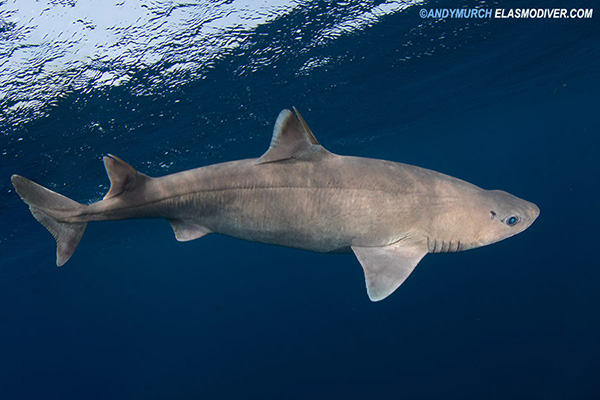|
|
|
SHARK INFO |
|
SHARK |
|
SHARK EVOLUTION |
|
|
|
SHARK DIVING |
|
SHARK DIVING 101 |
|
|
|
CONSERVATION |
|
|
|
PHOTOGRAPHY |
|
SHARK PHOTO TIPS |
|
|
|
RESOURCES |
|
|
|
WEB STUFF |
|
WHAT IS ELASMODIVER? Not just a huge collection of Shark Pictures: Elasmodiver.com contains images of sharks, skates, rays, and a few chimaera's from around the world. Elasmodiver began as a simple web based shark field guide to help divers find the best places to encounter the different species of sharks and rays that live in shallow water but it has slowly evolved into a much larger project containing information on all aspects of shark diving and shark photography. There are now more than 10,000 shark pictures and sections on shark evolution, biology, and conservation. There is a large library of reviewed shark books, a constantly updated shark taxonomy page, a monster list of shark links, and deeper in the site there are numerous articles and stories about shark encounters. Elasmodiver is now so difficult to check for updates, that new information and pictures are listed on an Elasmodiver Updates Page that can be accessed here:
|
|
_ |
ROUGHSKIN SPURDOG |
|
Roughskin spurdog, roughskin spiny dogfish. Valid Scientific Name: Cirrhigaleus asper Synonyms: Squalus asper Family: Squalidae Identification: The roughskin spurdog is a fairly stout squaloid shark with a greyish-brown upper body and a pale belly. It has two dorsal fins with long anterior spines. First dorsal fin originates posterior to free rear tip of pectoral fin. Second dorsal almost as large first. Spine on second dorsal fin more curved than spine on first dorsal fin. All fins have white trailing edges. The white margins are more pronounced on the dorsal fins and lower caudal lobe. Pectoral fins broad. Size: Commonly to 90cm but may exceed 118cm Habitat: Continental slopes from 73-600m. Abundance and distribution: A wide ranging species. Reported from the western Indian Ocean, Hawaii, western North Atlantic and the Gulf of Mexico. Common at 200-300m off South Carolina.
Conservation Status: The roughskin spurdog is listed as Data Deficient by the IUCN. Compagno (in prep. a) reports that this species is probably taken as bycatch in demersal trawl and deepwater longline fisheries in some parts of its range, including in the Western Atlantic and Western Indian Oceans. Though, like the bycatch of most other deepwater chondrichthyans, specific data is not available. Also reported to be occasionally caught by inshore line fisheries in the Eastern Cape, South Africa (Compagno in prep. a). Behavior: Unknown. Diet: Largely unknown but one dissected individual had squid in its stomach. Reproduction: Ovoviviparous - aplacental viviparity. Litter size 21-23 (based on a small selection of gravid females). Observations of vastly different sized broods collected at the same time of year indicate gestation probably lasts for two years like some other deepwater squalids. Photograph: Quetzalito, Gulf of Guatemala, Caribbean Sea. Similar species: The roughskin spurdog is the only dogfish on the east coast of North America wiith white margins on all of its fins. The Spiny Dogfish Squalus acanthias has a longer nose and usually displays scattered white spots. The longnose spurdog Squalus blainville (present in the Mediterranean and along the west coast of Africa) has a much longer laterally pointed nose, white margined fins and a thicker more robust first dorsal spine. The Cuban dogfish Squalus cubensis and shortspine spurdog have dorsal fins originating over the pectoral fins. Reaction to divers: Found too deep to come in contact with divers. No known encounters. Diving logistics: N/A. The specimen featured in the image above was collected while accompanying artisanal fishermen that were gill netting at 200m off the Caribbean coast of of Guatemala. Citatians and further reading:
|






















